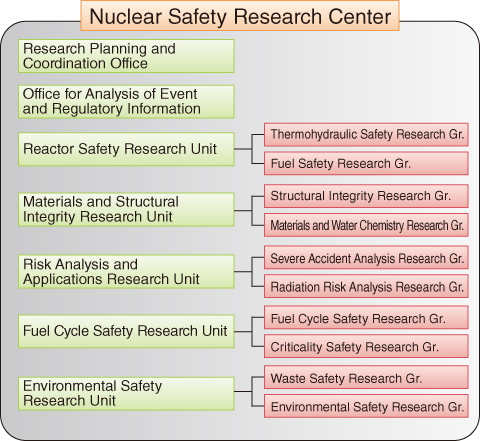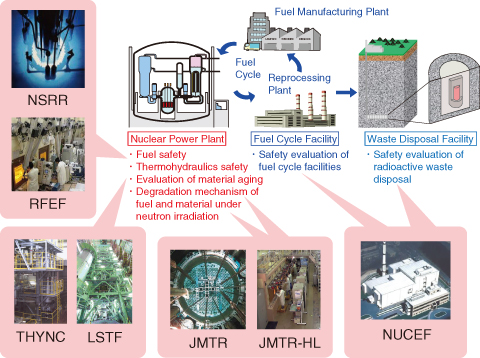
Fig.2-1 Organization of the nuclear safety research center
Starting April 2014, we have been strengthening the organization to promote studies of SAs, including the initiating event, progress of the accident, and the environmental impact, as well as the safety assessment due to the design basis accidents for several nuclear facilities.

Fig.2-2 Nuclear safety research areas and related JAEA facilities
NSRC acquires experimental data from various Japan Atomic Energy Agency facilities. These data for risk assessment and safety evaluation of nuclear facilities contribute to international efforts to develop evaluation methods and criteria.
To ensure the safe use of current nuclear facilities, the Nuclear Safety Research Center (NSRC) studies the possibility of serious accidents at nuclear installations and their consequences. A massive and severe accident (SA) occurred at the Tokyo Electric Power Company, Incorporated Fukushima Daiichi Nuclear Power Station (1F) as a result of the Great East Japan earthquake and tsunami. NSRC has been collaborating with the Japanese government to institute appropriate emergency response procedures based on research findings and developments. The specialists at NSRC regret that they were unable to prevent the accident.
Continuous efforts should be made to avoid serious damage while we utilize nuclear energy. A proper understanding of the situation and continuous improvement of current technologies are important for making the best and safest use of these technologies. In fact, the International Atomic Energy Agency, which investigated the accident at 1F, highlighted the importance of “continuous improvement.” To contribute to “continuous improvement aimed at the highest level of safety,” we strengthened the organization to promote studies of SA prevention and evaluation to reduce the risk of accidents at nuclear facilities and to improve nuclear disaster prevention using analyses such as environmental impact assessments (Fig.2-1).
We are committed to safety research and have devoted to this cause the various facilities shown in Fig.2-2. These special facilities allow the handling of radionuclides and the simulation of accident conditions.
This chapter presents the results of recent safety research on the following topics: simulation of fuel-cladding failure (Topic 2-1), effect of neutron irradiation on fracture properties of stainless overlay cladding for reactor pressure vessel (Topic 2-2), development of probabilistic structural assessment code for nuclear components with long-term operation (Topic 2-3), analytical techniques of gas inflow during loss of coolant accidents at pressurized water reactors (Topic 2-4), study on applicability of compacted clays to waste-disposal facility (Topic 2-5), and SA evaluation regarding loss of cooling function of highly active liquid waste in reprocessing plant (Topic 2-6).
The following Topics solicited by NSRC and related to the accident at 1F are described in Chapter 1: release of I-131 from contaminated water in the basement of the reactor building (Topic 1-18).